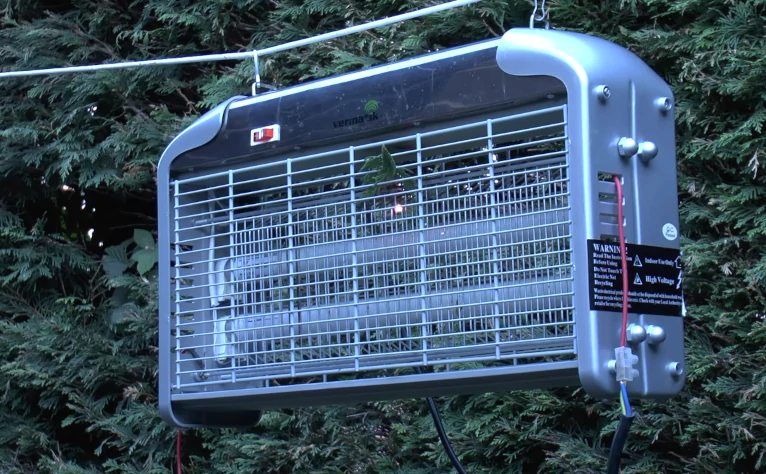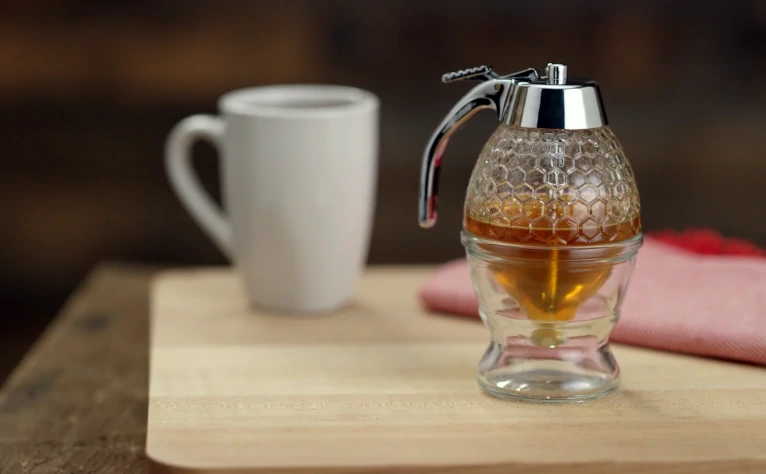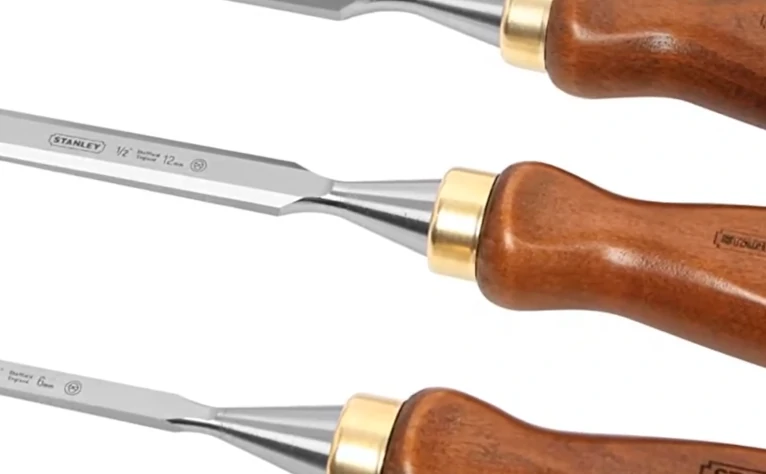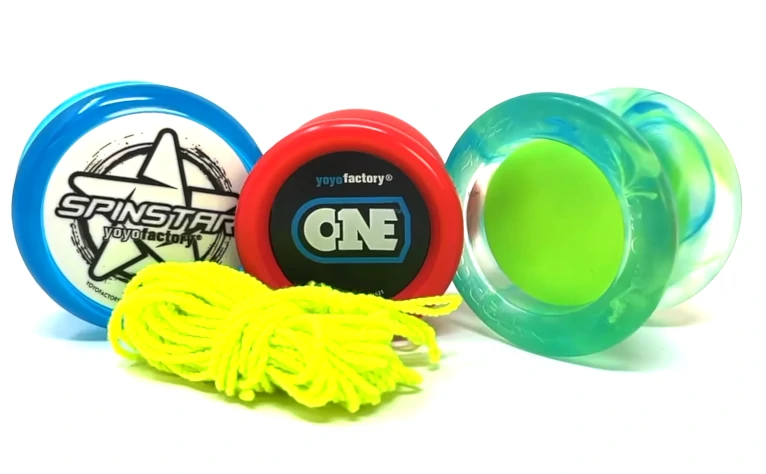Installation Guide For Water Softeners

Most households that are experiencing hard water supply often have water softeners. It is considered a main appliance to combat the problem with hard water supply, and there are tons of various models and types for filtering the hard water to make it potable for the whole family to drink, and friendly for water-related chores and appliances.
Owning a water softener is not merely simply and easy, as there are other requirements that need to be done in order to attain the softening goal, such as the installation and maintenance processes. As for now, the installation process is going to be the center of attention in this article because it is a tedious procedure especially for first timers, and complicated when one is not familiar with the parts and technicalities of the water softener model.
Planning Your Installation:
The water flow should have a main pipe to be attached to the softening model. Check for the space if it is sufficient for the whole package, as there are some water softening package may include a salt brine to contain the salt. The space must be allocated more than enough for future maintenance. Check the necessary parts if complete. Installing the water softener with incomplete parts is impossible because each part is essential to achieve correct flow of water softening. An instructions manual should always be present in the package because this is how the manufacturer communicates the technicalities, warnings, and advices to the consumers.
Sometimes, an installation team is hired to do the installation for the customer, nevertheless the brand and model of the purchased water softener. An installation team is primarily composed of screened professional who can provide quality service in installing the water softener. It is up to the consumer if he or she can be able to accommodate the installation process set by the manufacturer.
Water Pressure:
A pressure check is important for the requirement of the softener. Low and high water pressure can lead to damaging the softener. The recommended operating water pressure is ranged from 1.5 to 6 bar or 20 to 90 PSI. When water is flowing, the pressure should not be less than one bar or 15 PSI. Although some water softeners are tested to a pressure of eight bar, it is best to read the instructions manual for more information on the required pressure of the water flow.
In order to check the water pressure, connect a pressure gauge to the garden tap or any tap that is directly connected to the main water supply. If pressure check seems to be complicated, alternatively contact the local water supply to provide information on the water pressure in the area. A limiting valve is often installed with the water softener to assist in limiting the pressure, so that the softener may not be damaged with too much low or high pressure.
Electrical Connection:
The transformer is usually provided in the package, and it needs to be connected to an interrupted electrical connection supply with a power off capacity. A water softener needs a drain such as a utility sink or a floor drain, together with a nearby electrical receptacle. The flying lead from the transformer is plugged into the electrical connection of the controller, and it should not be caught by any mobile parts of the softening device.
Overflow Connection:
The overflow hose needs to be connected to the overflow elbow on the side of the cabinet, and it should be separated from the drain hose provided. A securing clip is no longer useful to keep the connection intact because the connection is not under pressure. The overflow connection must be sloping downward without any kinds of restriction. The overflow hose is recommended to be made visible when exiting the outside wall.
Rising Main Ready:
The rising main needs to be drained by turning off the stopcock and by opening the upstairs tap that is attached to the storage tank. Turn on the main water supply, in order for the ball valve continues to operate. Turn on the faucet to let tap water from running until it stops, then the rising main is empty and ready for the real softening operation.
Plumbing and Drain Connection:
Cut the rising main and fasten the three valves to form a bypass. The valves are then installed with the desired direction of the water flow. An additional pipe work may be required to change the existing plumbing.
If the water softener has plastic caps in the inlet, outlet and drain, then remove the caps. The pip work is directed from the bypass to the water softener with the usage of a flexible hose. The drain tube is needed to be attached via the air gap fitting. Push the tube securely into the connection, and run the tube towards a convenient drain. If the drain is controlled outside the household, then there must be something to protect it from freezing, especially during rainy and cold season.
Preparing to Actual Service:
Once all the connections are completed, approximately five liters of water is advisable to be contained into the brine tank. If the water softener is run by salt, then the recommended quantity of salt is also put into the tank. Make sure that the salt level does not exceed the height of the overflow inside the brine tank. Furthermore, the amount of salt in the brine tank still depends on the water-softening device, and the volume of water. Avoid letting the brine tank to be completely empty of salt, as there are softeners that do not process effectively without the salt. It is advised to check the salt level on a regular basis until a usage pattern is constituted.
Where to Install a Water Softener:
Allocating a spot in the household for the placement of the water softener is important as it may actually consume more space than imagined. Some softeners are large enough to take up a regular bathroom size, while other softeners are small enough to be squeezed through tight spaces.
For a general location, a water softener is commonly unseen but is easily connected to the plumbing system – in most cases, in the garage, basement, backyard, or the utility shed. Some households place the water softener beside the water heater for the best combination of eliminating hard water and heating water. When a space is allocated, there should be an extra space around the equipment for easy maintenance and servicing.
Avoid putting the water softener in a spot where freezing can be unhurriedly occurred. Freezing can pose a permanent damage on the unit, and void the warranty. Most water softening manufacturers do not include a warrant repair when the cause is entirely freezing because it is considered as human negligence over the instructions manual. Relieve the pressure and drain the system when the temperature is expected to drop below 40 degrees F or 4 degrees C, in order for the softening unit to be protected. Avoid placing the water softener in direct sunlight and outdoors, as it is not a solar water heater to be fully exposed in the sunlight.
To have a full water supply experience, the water softener is installed first before the water heater because the water softener helps in reducing limescale and sediment buildup in the water heater. For households where sodium level is quite high in the drinking water, an extra caution should be considered as too much sodium intake can pose health risk. Sometimes, there is an option to bypass faucets specially used for drinking water, such as the kitchen sink, or to soften the hot water produced by the water heater. However, in doing so, there is a possibility that the entire cold water system may lose the proposed benefits offered by the water softening unit.
Installation:
The installation of a new water softening system is usually complex and tedious because of all the connections that are needed to be fulfilled in order to have a well-operated flow. Either you can do the installation by yourself, or you can hire a professional who can setup the softening unit for you. Each side has its own ups and own. If you install the softening unit by yourself, then that means you are responsible with whatever device connection you make with the plumbing and other technicalities. Mostly, the manufacturer is not obliged to provide warranty if any of the softening parts have been destroyed due to human error. An instruction manual is already provided for you to read, to follow, and to understand.
However, if you contact a professional to do the installation for you, then all you need to worry about is the installation cost and, sometimes, the professional fee. Usually in some households, calling an installation professional is better than toiling yourself over such work. It is because you may spend up days figuring out the actual procedures even if it is already stated in the manual. Especially when you are not a techie person with the plumbing and electricity, this is going to be quite a problem.
A water softener with an embedded reverse osmosis system has the most expensive installation cost, while non-salt based systems are cheapest. The size of the softening unit is directly reciprocal to the capacity of the household – meaning, the more water the softening unit has to filter, the more costly the installation.
Sometimes, both salt and non-salt based water softeners cost almost the same installation amount, ranging $400 to $1000 on average. Bear in mind that salt-based softening unit has an additional expense, which is the salt. A salt bag is ranged around $20 a month.
The magnetic systems are the least complex to be installed, and can be installed by homeowners instead.
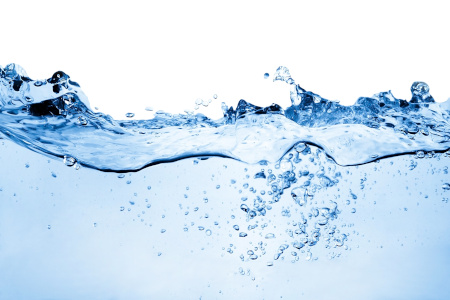
Plumbing the Water Softener:
A water softener has a separate bypass valve that is necessary to be assembled and to be attached to the unit. Some plumbing codes require an installation of shutoff valves to the water pipes that can lead to the flowing of water. The shutoff valve needs to be switched off easily once attached to the unit. When the softener has a bypass valve, remember to attach it to the softener. Always refer to the instruction manual for more detailed instructions and procedures on how to do the plumbing.
Here are some basic procedures that you can refer in installing a basic salt-based water softener:
- The area in which you are going to position the water softener must be clear and clean. It must be swept and free from dirt so that you can start fresh with the installation. The area must be spacious enough for the connecting pipes; otherwise, you may not be able to setup the pipes due to limited space. Pay attention to the orientation of the unit, most especially the inlet and the outlet of the unit. The inlet must be attached to the pipe of the main water supply, while the outlet must be attached toward the water heater.
- The main water supply should be shut off before connecting the valves for the water softener. Turn the water supply off, together with the power or the circuit breaker. Open the faucets and hosepipes to make sure that the there is no excess water in the pipes.
- Attempt to cut the water supply line by utilizing a pipe cutter, and install the elbow fittings in order to align two lines to the inlet and to the outlet ports found in the bypass valve. Extra attention is needed so that the orientation is done accordingly. The water supply contains hard water and it flows into the inlet of the water softener, and the soft water transports into the fixtures and faucets of the household. If you want an extended outlet, install a T-fitting prior to the water softener so that hard water can flow into it.
- The pipes should be cut and installed that are connected to the bypass valve. Solder all the nipples and the fittings before making attachments to the plastic bypass valve because the heat from the soldering can damage the plastic material of the valve. Use a reducing fitting if the water pipes are huge, to connect the pipes to the water softener. Take note that if the household’s electrical system depends on the plumbing to have a safe grounding, install a jumper on the pipes upon installation of the water softener to ensure an extra unhazardous grounding.
- Fasten the drain hose to the water softener, and run the water in the drain or utility sink. The terminal of the hose must be at least two inches high above the drain hole to inhibit deliberate running of wastewater. The hose must be securely clamped to prevent leaking and wasting. Be attentive that the drain hose must be the correct size in accordance to the distance of its length and height in relation to the inlet. Normally, if the discharge is lower than the inlet, the interior diameter line is measured only half an inch, and it can be run up to 15 feet. A 5/8-inch interior diameter is necessary for the similar distance if the discharge is a bit higher than the inlet. If the distance is around 15 to 25 feet or if the drain is seemingly higher than the inlet, go for the ¾-inch interior diameter. The drain line must not be located more than 10 feet above the floor to prevent contamination. Reread the instruction manual for caution.
- The overflow tube of the brine must be connected to the main line of the water supply. The discharge of the overflow must be aligned lower than the overflow fitting.
- Place the bypass valve to its corresponding position, and switch the water on to flow through the water softener. This is done only for a few minutes in order to flush the sediments and dirt out, and to release air that are trapped in the pipes. Open the bypass valves to the water heater, and restore the main power or switch the gas valves back on. Check the pipes or valves for any leaks or drippings.
- Turn the valve back to the backwash position after switching the water softener back to the nearby receptacle.
- Slightly open the inlet control on the bypass valve slowly in order to prevent any buildup of air. When the water flows steadily to the drain and the water softener stops making any unnecessary sounds, the inlet and the outlet bypass controls can be let fully open. Fill the tank with hard water, and fill the brine tank with salt or as directed in the instructions manual.
- The water softener can be plugged in again to start the softening process. Read the manual on how to start the regeneration and the service.
WARNINGS:
An installation of a water softener is a tedious job, and numerous precautions should be taken into careful considerations. When people are medically prescribed on a low sodium diet, they are advised to drink untreated, hard water. The latter is also recommended in the mixture of infant feed preparation for infants below six months of age. However, there is no proven statement that hard water can pose risk on anyone’s health. The government, specifically the Department of Health, recommends the use of water softening unit for further safety.
Installation Positions – The water softener must not be installed next to a boiler or to a water heater because there may be a chance of contacting to excessive heat.
New Location – When the water softener is going to be installed in a new household, the entire plumbing system should be completely flushed before the installation and the actual service.
Freezing – Most water softeners are not manufactured to be resistance from freezing. During the installation, the softening unit, the pipework and the drain must not be exposed to freezing conditions.
Heat – The hoses and pipes of the water softener should not be operated near the radiators, boilers and the hot water pipes from the water heater. Take note that the heat can melt the hoses, which is why avoid placing the boilers and radiators near the softener’s equipment.
Hoses – Before utilizing the water pipes of the softeners, make sure that the hoses are the actually hoses that are supplied by the manufacturer or that are packaged in the installation kit. Avoid using garden hose and washing machine as alternatives to the hoses, as these are not suitable for the softeners.
Condensation – In order for the water to flow smoothly in the pipes, wipe the damp area in the kitchen to prevent condensation and the lagging of the pipe work.
Hygiene – When dealing with installing a water softener, remember that you are treating soft water that is meant to be potable for everyone in the household. Attempt to exercise domestic hygiene so that the water may not be contaminated by such incorrect handling. Precautions must be exercised in particular with breaking into the household’s main water supply, and with connecting the bypass valves. The water softener must be flushed thoroughly before using for the actual process.
Electrical Earth Bonding – When the rising main pipework is changed, the integrity of the earth bonding should be properly maintained.
Kitchen Units – Upon installing a salt-based water softener in the kitchen base unit, there are some guidelines that you can do: (A) Cut the base floor of the unit in order for the water softener can sit on the kitchen floor; (B) Fit the support of the water softener on the floor of the kitchen so that the heavy weight of the softener can be properly supported.
Tap Hard Water – The provision of the tap hard water at the kitchen sink must be separated, and a utility area or any convenient location can suffice.
Dishwashers – The dishwashing appliance should be correctly attached to the hard water supply. Refer to the instructions manual for further advice about the connection of the water-related appliance to the softening unit.
Drain Connection – When the drain tube is attached to the grey JG elbow, the tube should be pushed into the elbow around 20 millimeters of measurement to guarantee a leak-free joint. The joint should not leak during regeneration.
SET THE SOFTENER TO WORK:
Upon closing the bypass and the outlet valve, gradually open the inlet valve to the water softener, and open the outlet valve and the kitchen faucet to flush the excess water from the pipework. After a few minutes, attempt to close the kitchen faucet, and check the pipework if there is any leak happening. Fill the water manually by using a jug until sufficient water can fully cover the salt platform.
INSTALLING A REVERSE-OSMOSIS WATER SOFTENER:
Below are some guidelines in installing a reverse-osmosis water softener. These are only the basic approach on how to handle such a softening unit. Detailed instructions and other special procedures are specially indicated by the manufacturers.
- The water supply below the sink should be shut off. Turn the faucet on to drain the excess water out of the pipelines.
- The recommended height to install the filter assembly should be accomplished, and the cabinet walls should be measured. Mark the area where the pipeline may go, and screw that mark to the wall.
- Attempt to unscrew the cold water supply from the valve, and install the saddle valve including the filter. Screw back the cold water supply onto the top of the saddle valve.
- Connect the water filter supply to the saddle valve, and cut the tubes to the appropriate length with the utility knife. Connect the other end to the filter, too.
- Connect the water supply line and the waste lines to the tap, together with the system. Make the lines shorter if they are too lone to avoid excess, bulky lines once installed.
- Connect the tap to the sink and the drain line adapter. Puncture a small hole in the waste line and connect the valve so that the water can flow smoothly on the valve towards the faucet.
- The storage tank or the brine tank can be set, connecting the supply pipeline.
- Gradually switch on the faucet with the doors open to inspect for possible leaks.
CONCLUSION:
The installation of a water softening unit is very crucial because it is a device comprised of separate parts that need to be attached securely to the main water supply. No matter the type of softening unit that you are going to purchase, it is important that you reckon over on how to install the unit in your household. Options are readily available for your convenience. You can refer to internet videos or other do-it-yourself manual on how to install the unit. On the other hand, you can contact professionals to deal with the installation process. Remember that whichever you choose, you do it because you are willing to utilize the appliance that can provide you with safe water.
Another important thing is that always refer to the instructions manual provided by the manufacturer to ensure proper and secure installation of the water softening unit.

